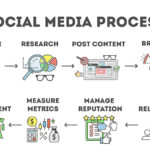In the fast-paced business world, generating leads is essential for growth and success. However, managing and nurturing those leads effectively can be a challenge. This is where a Customer Relationship Management (CRM) system comes into play. In this article, we will guide lead-driven business owners on how to set up a CRM and explain why it is crucial for lead management. By following these steps, you can optimize your lead generation efforts, streamline your processes, and drive business growth.
Understanding the Importance of CRM for Lead-Driven Businesses
As a lead-driven business owner, you understand the value of leads in driving revenue and growth. However, managing and nurturing leads manually can be overwhelming and time-consuming. This is where a CRM system becomes a game-changer. A CRM system centralizes your lead data, streamlines lead management processes and enables personalized communication. It helps you stay organized, track interactions, and optimize your lead nurturing efforts, ultimately improving your chances of converting leads into loyal customers.
Choosing the Right CRM Solution for Your Business
When selecting a CRM system, it’s crucial to consider factors such as scalability, ease of use, and customization options. Look for a CRM solution that can accommodate your business’s growth and integrates well with your existing tools and processes. Popular CRM solutions like Salesforce, HubSpot CRM, and Zoho CRM offer robust features specifically designed for lead management.
Defining Your Lead Management Processes
To effectively set up your CRM, it’s important to establish clear lead management processes. Start by defining your lead capture process, ensuring that all leads are captured accurately and consistently. Next, outline your lead nurturing workflow, including steps for follow-ups, personalized communication, and tracking lead interactions. By establishing these processes, you create a systematic approach to managing and nurturing your leads.
Setting Up Your CRM System
Setting up your CRM system involves several key steps. First, migrate your existing lead data into the CRM to ensure a seamless transition. Next, customize the CRM to align with your lead management processes. Configure fields, layouts, and workflows to reflect your specific needs. Grant user access and define roles within the CRM to ensure data security and restrict access as needed. Integrate your CRM with existing tools like website forms or email marketing platforms to automate lead capture and streamline communication. Finally, segment your leads within the CRM based on criteria such as demographics, lead source, or behavior for better targeting and personalized communication.
Automating Lead Capture and Nurturing
One of the key advantages of a CRM system is its ability to automate lead capture and nurturing processes. By leveraging automation features, you can set up lead capture forms on your website that feed directly into the CRM, saving time and ensuring accurate data capture. Additionally, you can create predefined workflows and email sequences to automate follow-ups and nurture leads based on their behaviors and interests. Automation allows for timely and personalized communication, enhancing the customer experience and improving your chances of converting leads into customers.
Leveraging CRM Insights for Better Lead Management
A CRM system provides valuable insights into lead behavior and preferences. Take advantage of CRM analytics to track key metrics, such as lead engagement, conversion rates, and revenue generated. Leverage these insights to identify high-value leads, optimize your lead nurturing efforts, and make data-driven decisions. By understanding your leads better, you can tailor your marketing strategies, personalize your communication, and maximize your chances of converting leads into customers.
Training and Adoption of the CRM System
To ensure successful CRM implementation, proper training and adoption are crucial. Train your employees on how to effectively use the CRM system, including lead management best practices and utilizing automation features. Encourage adoption by highlighting the benefits of the CRM, demonstrating its value, and providing ongoing support. Foster a culture of CRM utilization within your organization to maximize its potential for lead-driven success.
The wrap-up:
As a lead-driven business owner, setting up a CRM system is a strategic move to optimize your lead management processes and drive business growth. By selecting the right CRM solution, defining lead management processes, and leveraging automation and analytics, you can streamline your operations, improve communication with leads, and maximize your conversion opportunities. Embrace the power of a CRM system and unlock its potential to revolutionize your lead generation efforts and propel your business to new heights.

Since its launch in 2016, Bizbotweb has been at the forefront of empowering businesses and individuals to easily navigate the digital world, from owning their intellectual property to managing websites and simplifying WordPress setups. As the author of our articles, the “Chief Robot” brings a wealth of knowledge and innovation, embodying Bizbotweb’s commitment to making digital presence seamless and accessible for everyone. Focusing on integrated digital marketing efforts, our content is designed to guide users through the evolving digital landscape, ensuring they have the tools and insights needed to thrive online.
Blog Categories
Check out other Pages
Have questions?
Schedule a free consultation if you have questions about our digital marketing services or would like additional information.










